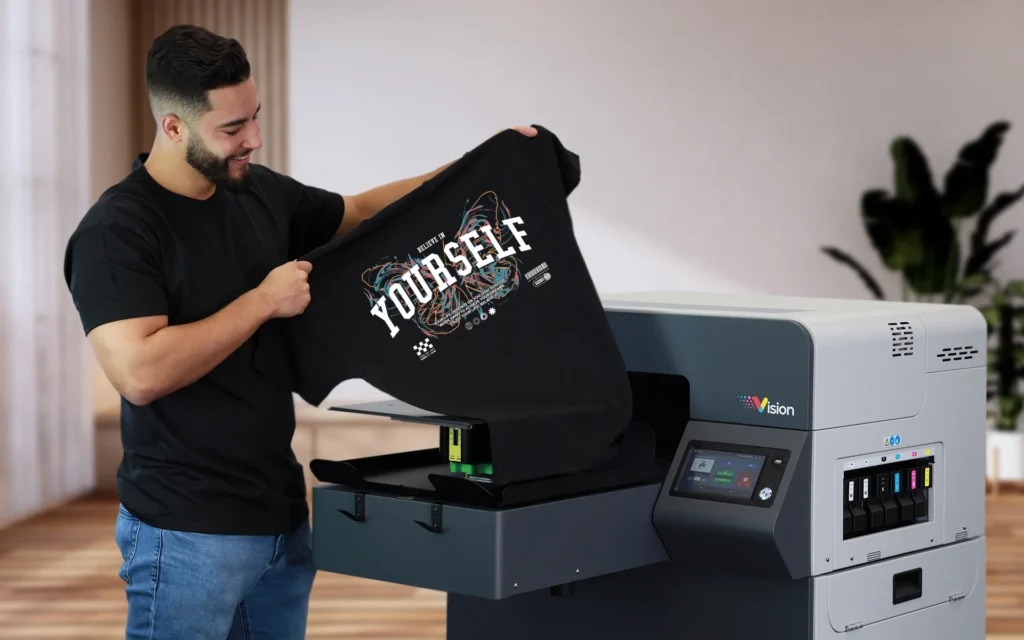T-shirts are one of the most common forms of clothing in the world. They serve as a canvas for self-expression, fashion statements, and company branding tshirt printer. Whether it’s a quirky design, a corporate logo, or a personalized piece of artwork, the technology behind t-shirt printing has evolved drastically over the years. In this article, we’ll explore how t-shirt printers have changed the fashion and printing industries, as well as the various methods used today.
The Birth of T-Shirt Printing
T-shirt printing has its origins in the early 20th century when silk screen printing was used to decorate shirts. Initially, silk-screen printing was the go-to method for mass-producing designs on t-shirts. This technique involved creating a stencil (or screen) of the design and applying ink over the fabric, resulting in crisp, vibrant prints.
As the demand for custom t-shirts grew, more printing techniques emerged. By the 1990s, digital printing technology began to take over, allowing for greater customization, smaller runs of shirts, and faster production times.
The Rise of Digital Printing
One of the major breakthroughs in t-shirt printing came with the advent of digital printing, particularly Direct-to-Garment (DTG) technology. Unlike traditional screen printing, which requires separate screens for each color, DTG printers use inkjet technology to print designs directly onto the fabric. This eliminates the need for stencils and allows for high-quality, detailed prints on t-shirts, including full-color images and gradients.
The benefits of DTG printing are clear. It offers better accuracy, faster turnaround times, and the ability to print on-demand, making it perfect for small businesses, custom printing shops, and independent designers. Additionally, DTG printing can handle intricate designs and smaller orders without the high upfront costs associated with screen printing.
Heat Transfer Printing
Another popular method in t-shirt printing is heat transfer printing. This involves printing a design onto a special transfer paper and then using heat to transfer the ink from the paper to the fabric. Heat transfer printing is an ideal choice for those who want to create detailed, colorful designs quickly and without the need for large setups.
This method works well for smaller quantities of shirts and allows for easy customization, making it a go-to technique for entrepreneurs and hobbyists. Whether it’s for personal use, events, or small businesses, heat transfer printing provides a simple solution to creating custom t-shirts.
Screen Printing: Still Relevant Today
Despite the rise of digital and heat transfer printing, screen printing remains one of the most widely used methods, especially for large runs of t-shirts. The process involves creating a stencil of the design, applying ink onto the fabric through a mesh screen, and repeating the process for each color. Screen printing is ideal for printing bold, vibrant designs with long-lasting results.
The process is labor-intensive and requires a significant upfront investment, which makes it most economical for large orders. For this reason, screen printing continues to dominate for large-scale t-shirt printing, such as promotional giveaways, merchandise for bands and events, or corporate apparel.
Sublimation Printing: Perfect for All-Over Designs
Sublimation printing is another exciting method, especially for all-over prints. Unlike traditional printing methods, sublimation allows the ink to turn into gas and bond with polyester fabrics, creating a vibrant, durable design that won’t fade over time. This technique is perfect for creating complex, full-coverage designs that wrap around the t-shirt.
The downside to sublimation printing is that it works best on light-colored polyester garments. Therefore, it’s not ideal for dark-colored fabrics or cotton shirts, but it is an excellent choice for those looking to create all-over printed, high-quality custom designs for sports teams, events, and fashion.
The Role of T-Shirt Printers in the Custom Apparel Industry
T-shirt printers have revolutionized the custom apparel market, providing customers with the ability to create one-of-a-kind designs without worrying about large minimum orders. Whether you’re a small business owner, a graphic designer, or an individual looking to create a unique t-shirt, t-shirt printers offer a wide range of options.
With the increasing demand for personalized fashion and corporate merchandise, the market for t-shirt printers is booming. The customization trend isn’t just about fashion—it’s also a vital tool for businesses looking to promote their brand through custom shirts, hats, and other apparel.
Conclusion
T-shirt printers have come a long way from the traditional methods of silk-screening to the highly sophisticated digital and heat transfer printing techniques of today. With multiple options available, businesses and individuals can now create high-quality, custom-designed t-shirts on-demand and without the need for large-scale production runs.
